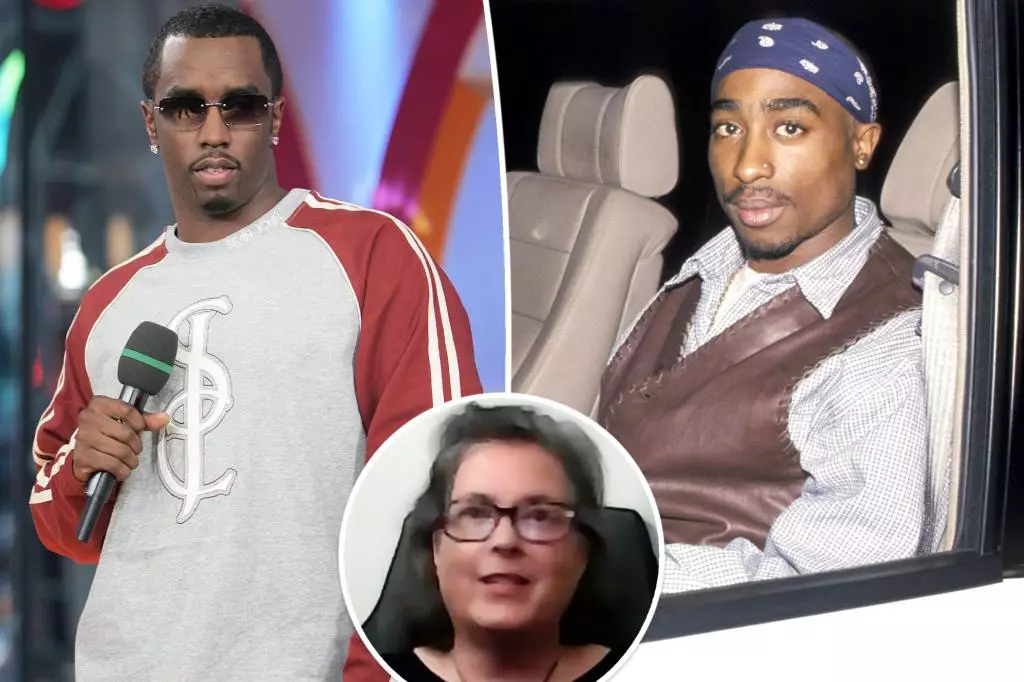The life and untimely death of Tupac Amaru Shakur remains one of the most compelling narratives in the history of hip-hop music. His impact transcended music; he was a cultural icon whose death in 1996 shocked millions. However, what further complicates this tragedy is the lingering shadow of violence and betrayal that surrounded his life. Recently, investigations have reignited debates regarding the connections between Tupac’s murder and prominent figures in the industry, particularly Sean “Diddy” Combs. Crime scene investigator Sheryl McCollum has made startling claims linking Sean Combs to Tupac’s fate, prompting both public and legal scrutiny.
McCollum states that the roots of Tupac’s demise can be traced back to an incident in 1994 at Quad Studios in New York City, where Shakur was shot in a robbery attempt. Intriguingly, at that time, Sean Combs was present with a sizeable entourage of approximately 40 individuals, none of whom faced harm, raising critical questions about the nature of the incident. McCollum points out the illogicality of one individual being targeted while a larger group remained seemingly untouched. “Who would have had more money and jewelry? Forty,” she ponders, challenging the narrative that places Tupac alone in danger.
This incident marked the beginning of a tumultuous relationship between Tupac and other key players in the hip-hop world. In the aftermath of the Quad Studios shooting, Tupac openly accused Biggie Smalls, Combs, and others associated with Bad Boy Records of complicity, suggesting that their cool demeanor when he stumbled into the studio, bloodied and traumatized, was more than a mere coincidence. His accusations fueled an already volatile rivalry within the rap community.
Fast forward to Tupac’s tragic murder in 1996, where he fell victim to a drive-by shooting in Las Vegas. His death, much like the earlier incident, remains surrounded by unanswered questions. McCollum makes an essential observation that links both events: “Both times that Tupac Shakur is shot, he is trapped in something.” This feeling of entrapment echoes in the minds of investigators and fans alike. It paints a grim picture of someone without an escape, which becomes even more alarming given that neither incident seems to have video surveillance proving who was involved.
Interestingly, the absence of footage leads to speculation about individuals who were close to Tupac, narrowing down the list of potential suspects. “To me, this signifies somebody close to him knows his whereabouts on that day,” McCollum adds, strengthening the argument that Tupac’s small circle may have played a role in orchestrating the incidents that led to his demise.
The recent observation by Page Six that Tupac’s family may pursue a wrongful death lawsuit against Combs reopens old wounds and highlights ongoing dysfunction and mistrust within the hip-hop community. McCollum’s theory emerges amid these legal debates fueled by new testimonies from those connected to Combs, suggesting a potential conspiracy that implicates him in the violence that befell Tupac.
This coincides with claims made by Duane “Keefe D” Davis, the man currently charged with Tupac’s murder, who ventured that Combs offered a financial incentive to have Tupac killed. The intertwining of past allegations and current legal consequences positions Combs at a precarious junction in his life, especially as he faces a separate, serious legal battle concerning sex trafficking charges.
As words and theories continue to circulate among fans, legal teams, and investigators, the enduring question remains: Who was really responsible for the death of Tupac Shakur? The narratives woven through these historic events serve as a chilling reminder of the violence that has marred the hip-hop industry. In the end, Tupac’s legacy is not only defined by his revolutionary music but also by the unraveling mystery surrounding his death—a saga that continues to captivate and torment all those involved. The specter of betrayal looms large, and as the quest for justice persists, so too does the need for truth in a world often veiled by silence and fear.

Leave a Reply